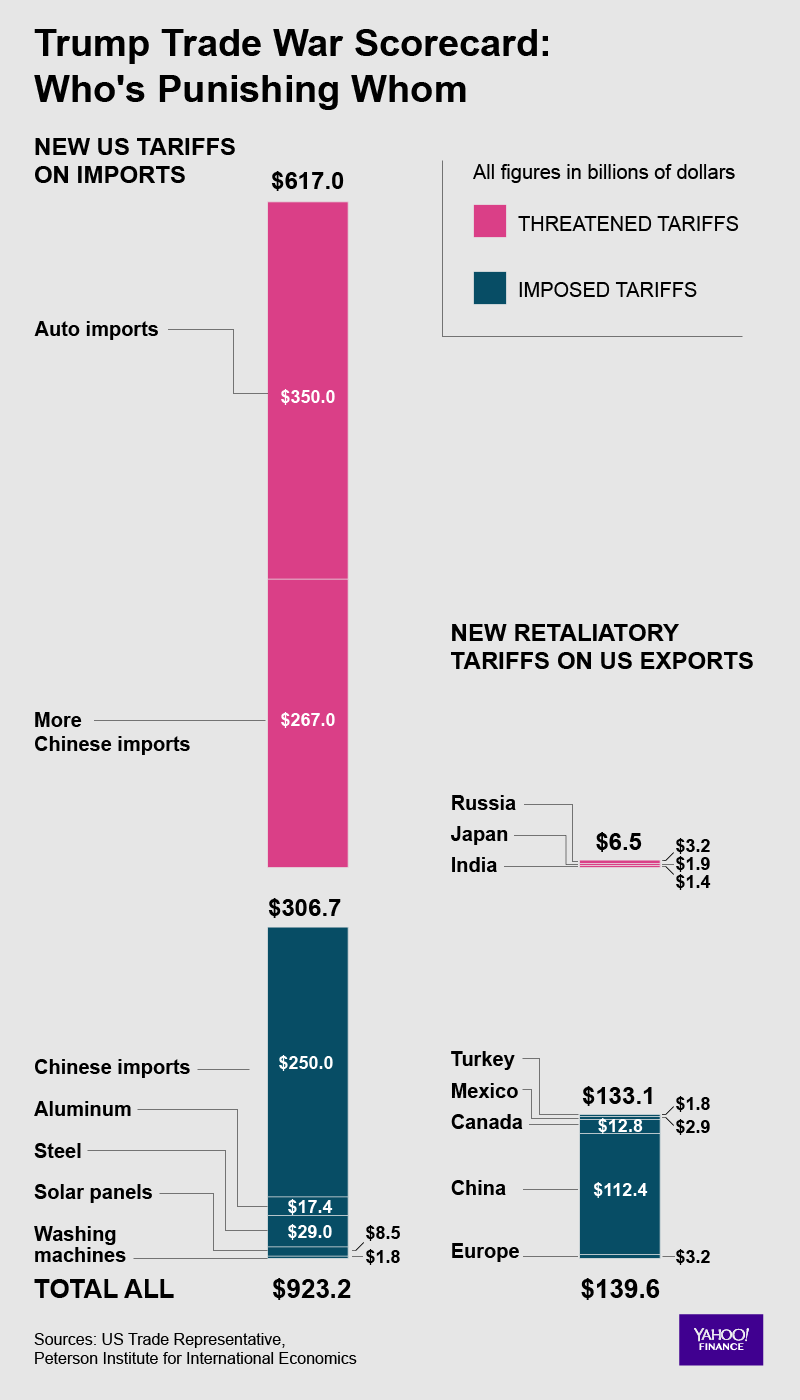Your Trump trade war scorecard, updated
More Trump tariffs are on the way. Yahoo Finance is keeping score.
President Donald Trump will now impose 10% tariffs on an additional $200 billion worth of Chinese imports, more or less as he threatened to do. His original plan was to slap a 25% tariff on those products, but that might have been excessively harmful to consumers during this year’s holiday shopping season. So the 10% tariff will apply until January 1, when the levy will rise to 25%.
With his latest move, Trump has now imposed fresh tariffs on $250 billion worth of Chinese imports, and another $57 billion worth of imports from other countries. Trading partners, in response, have retaliated with tariffs of their own on $133 billion worth of U.S. exports. Here’s a breakdown:

What began as a trade scuffle is getting much closer to what you might call a war. In addition to the duties Trump has imposed, he has threatened to put tariffs on another $267 billion worth of Chinese imports, which would essentially leave every imported Chinese product under a higher import duty. Beyond that, Trump has threatened tariffs on all automotive imports, which would be another $350 billion worth of goods.
Tariffs are a tax imposed on imported goods when they enter the country. They raise the cost of a product by the amount of the tariff. So a $100 product hit with a new 10% tariff would now cost $110. Producers and middlemen absorbing that cost typically try to pass in on to their customers, which pushes prices up, even though the purchaser isn’t getting more.
At current levels, the Trump tariffs affect a range of products that add up to just 1.7% of GDP. On their own, they’re not severe enough to trigger a recession or cause an abrupt spike in inflation. But they can definitely hurt certain economic sectors, such as low-margin businesses that must suddenly pay more for inputs such as metals or circuit boards. Retaliatory tariffs add to the sting, since they effectively raise the price of American products in foreign markets. As prices rise, consumers in those foreign markets shift to competing products, in some cases shutting U.S. producers out completely.
It’s a risky move for Trump, who is basically raising taxes on many businesses and consumers right before the midterm elections. The latest tariffs will affect about 27% of all consumer goods imported from China, according to Citigroup, including furniture, appliances, tools, electronics and food. Trump seems to think he will soon reach a pain point with China, forcing it to buckle. But he’s raising the pain on ordinary Americans at the same time. China may resist until the November midterms, at least, to see if America’s voters join them in opposition to Trump’s tariffs.
Confidential tip line: rickjnewman@yahoo.com. Click here to get Rick’s stories by email.
Read more:
Rick Newman is the author of four books, including “Rebounders: How Winners Pivot from Setback to Success.” Follow him on Twitter: @rickjnewman

 Yahoo Finance
Yahoo Finance 
